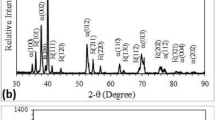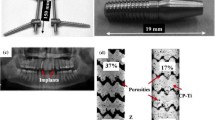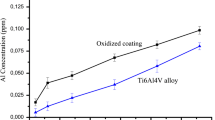Abstract
Titanium and its alloys have been used in a broad range of products such as biomedical implants due to their high specific strength, corrosion resistance, and biocompatibility. Improvement in microstructure and mechanical properties of commercially pure (CP) titanium is usually performed by cold rolling and controlled atmosphere heat treatment. However, this is an energy-intensive, expensive, and a multi-stage process to achieve the desired properties. Hence, to address these challenges, in this study, the effects of an in situ electro-plastic treatment (ISEPT) on the microstructure evolution of CP titanium have been studied. The deformation load and electric current in this treatment were applied in the same direction (in situ) to maximize the electro-plastic effect. Simultaneous electric current and strain application created a condition for dynamic recrystallization to occur at low temperature and under atmospheric conditions, thus reducing the cost and energy for manufacturing in a single process. The rapid heating and cooling prevented the oxidation of titanium to a large degree, eliminating the requirements for costly inert gas or vacuum. The results showed rapid recrystallization of CP titanium at 3.2 mm/s roller surface speed. Recrystallization led to a reduction in average grain size to 7 μm with 18% increase in microhardness. Pre-cold rolling of the CP-Ti structure enhanced grain refinement due to the introduction of dislocations and the applied electric current interactions. The SEM and XRD investigations revealed the relationship between the ISEPT treatment and the evolution of microstructure in CP-Ti. The effect of specimen geometry on the ISEPT was discussed.



























Similar content being viewed by others
Data availability
The raw/processed data and materials required to reproduce these findings cannot be shared at this time as the data also forms part of an ongoing study.
References
Lütjering G and JC Williams, Titanium. 2007: Springer Science & Business Media
Leyens C and M Peters, Titanium and titanium alloys: fundamentals and applications. 2003: John Wiley & Sons
An X.-Z., X.-H. Rao, and Y.-N. Li, Impact of non-isothermal warm rolling on microstructure, texture and mechanical properties. ASME 2017 12th International Manufacturing Science and Engineering Conference collocated with the JSME/ASME 2017 6th International Conference on Materials and Processing: Volume 1: Processes, 2017
Zherebtsov SV, Dyakonov GS, Salem AA, Malysheva SP, Salishchev GA, Semiatin SL (2011) Evolution of grain and subgrain structure during cold rolling of commercial-purity titanium. Mater Sci Eng A 528(9):3474–3479
Sabat RK et al (2016) Texture and microstructure evolution of commercially pure titanium during hot rolling: Role of strain-paths. Mater Des 91:58–71
Luo P, McDonald DT, Palanisamy S, Dargusch MS, Xia K (2013) Ultrafine-grained pure Ti recycled by equal channel angular pressing with high strength and good ductility. J Mater Process Technol 213(3):469–476
Luo P, Xie H, Paladugu M, Palanisamy S, Dargusch MS, Xia K (2010) Recycling of titanium machining chips by severe plastic deformation consolidation. J Mater Sci 45(17):4606–4612
Zhao Y, Guo H, Fu MW, Ning Y, Yao Z (2013) Fabrication of bulk ultrafine grained titanium alloy via equal channel angular pressing based thermomechanical treatment. Mater Des 46:889–894
Parshikov RA et al (2013) Technological problems of equal channel angular pressing. Rev Adv Mater Sci 34:26–36
Childerhouse T, Jackson M (2019) Near Net shape manufacture of titanium alloy components from powder and wire: a review of state-of-the-art process routes. Metals 9(6):689
Caiazzo F (2018) Additive manufacturing by means of laser-aided directed metal deposition of titanium wire. Int J Adv Manuf Technol 96(5):2699–2707
Weston NS, Jackson M (2017) FAST-forge− A new cost-effective hybrid processing route for consolidating titanium powder into near net shape forged components. J Mater Process Technol 243:335–346
Doblin C, Cantin GM, Gulizia S Processing TiROTM powder for strip production and other powder consolidation applications. 2016. Trans Tech Publications Ltd
Ivasishin OM, Markovsky PE (1996) Enhancing the mechanical properties of titanium alloys with rapid heat treatment. Jom 48(7):48–52
Ivasishin OM (2001) High strength microstructural forms developed in titanium alloys by rapid heat treatment. Le Journal de Physique IV 11(PR4):Pr4-233–Pr4-240
Ivasyshyn О, Markovs’kyi PE, Havrysh I (2015) Formation of the microstructure and mechanical properties of VT22 titanium alloy under nonequilibrium conditions of rapid heat treatment. Mater Sci 51(2):158–164
Ivasishin OM, Teliovich RV (1999) Potential of rapid heat treatment of titanium alloys and steels. Mater Sci Eng A 263(2):142–154
Chen Z et al (2019) An innovation for microstructural modification and mechanical improvement of TiAl alloy via electric current application. Sci Rep 9(1):1–10
Salandro WA et al (2014) Electrically assisted forming: modeling and control. Springer
Ao D, Chu X, Gao J, Yang Y, Lin S (2019) Experimental investigation on the deformation behaviors of Ti-6Al-4V sheet in electropulsing-assisted incremental forming. Int J Adv Manuf Technol 104(9):4243–4254
Xu ZS, Chen YX (1988) Effect of electric current on the recrystallization behavior of cold worked α-Ti. Scr Metall 22(2):187–190
Yanagimoto J, Izumi R (2009) Continuous electric resistance heating—Hot forming system for high-alloy metals with poor workability. J Mater Process Technol 209(6):3060–3068
Saifullin RN, Natalenko VS (2011) A method of production of sintered strips by electric resistance rolling. Weld Int 25(03):205–208
Salandro WA, Bunget C, Mears L Thermo-mechanical investigations of the electroplastic effect. American Society of Mechanical Engineers Digital Collection
Zahiri SH, Davies CHJ, Hodgson PD (2005) A mechanical approach to quantify dynamic recrystallization in polycrystalline metals. Scr Mater 52(4):299–304
Humphreys FJ, Hatherly M (2012) Recrystallization and related annealing phenomena. Elsevier
Zahiri SH, Gulizia S (2018) Process for forming wrought structures using cold spray, in World international property organization. WIPO, Editor
Pope J, Jackson M (2019) FAST-forge of diffusion bonded dissimilar titanium alloys: a novel hybrid processing approach for next generation near-net shape components. Metals 9(6):654
Zahiri SH et al (2005) Models for static and metadynamic recrystallisation of interstitial free steels. Mater Sci Forum 475:157–160
Sakai T, Belyakov A, Kaibyshev R, Miura H, Jonas JJ (2014) Dynamic and post-dynamic recrystallization under hot, cold and severe plastic deformation conditions. Prog Mater Sci 60:130–207
Wagner F, Bozzolo N, van Landuyt O, Grosdidier T (2002) Evolution of recrystallisation texture and microstructure in low alloyed titanium sheets. Acta Mater 50(5):1245–1259
Chun YB, Yu SH, Semiatin SL, Hwang SK (2005) Effect of deformation twinning on microstructure and texture evolution during cold rolling of CP-titanium. Mater Sci Eng A 398(1-2):209–219
Murthy PLS, Patil H, Sarada BN (2016) Studies on influence of roller diameter and roller speed on process parameters in hot rolling process using manufacturing simulation. Technical research organization India 3(5):24–27
Groover MP (2020) Fundamentals of modern manufacturing: materials, processes, and systems. John Wiley & Sons
Lupi S, Forzan M, Aliferov A (2015) Induction and direct resistance heating. Springer, Switzerland
Jandaghi MR, Pouraliakbar H, Saboori A (2019) Effect of second-phase particles evolution and lattice transformations while ultrafine graining and annealing on the corrosion resistance and electrical conductivity of Al–Mn–Si alloy. Materials Research Express 6(10):1065d9
Jandaghi MR, Pouraliakbar H (2018) Elucidating the microscopic origin of electrochemical corrosion and electrical conductivity by lattice response to severe plastic deformation in Al-Mn-Si alloy. Mater Res Bull 108:195–206
Acknowledgements
The authors would like to thank and acknowledge the technical and scientific assistance of Emma Regos, Malisja de Vries, and Aaron Seeber from CSIRO, Clayton, Victoria, and Rizwan Abdul Rahman Rashid from Swinburne University of Technology, Hawthorn, Victoria.
Funding
This project is supported by funded by the Commonwealth Scientific and Industrial Research Organization (CSIRO) and Swinburne University of Technology, Victoria, Australia.
Author information
Authors and Affiliations
Contributions
Mohammed Abdul Khalik (MAK): Contributed towards carrying out the research work writing the manuscript
Saden H. Zahiri: Concept development and initial experimental work co-supervision and contribution towards manuscript
Syed H. Masood: Primary supervisor of this project, working with MAK, and contribution towards manuscript
Suresh Palanisamy: Co-supervisor of MAK, contribution towards materials characterization, and writing of the manuscript
Stefan Gulizia: Co-supervision
Corresponding author
Ethics declarations
Ethical approval
There are no requirements for ethical approval for this project.
Consent to participate/publish
All the authors consent to participate and contributed towards this work and publication in IJAMT journal.
Conflict of interest
The authors declare no competing interests.
Additional information
Publisher’s note
Springer Nature remains neutral with regard to jurisdictional claims in published maps and institutional affiliations.
Rights and permissions
About this article
Cite this article
Khalik, M.A., Zahiri, S.H., Masood, S.H. et al. In situ electro-plastic treatment for thermomechanical processing of CP titanium. Int J Adv Manuf Technol 115, 2639–2657 (2021). https://doi.org/10.1007/s00170-021-07342-6
Received:
Accepted:
Published:
Issue Date:
DOI: https://doi.org/10.1007/s00170-021-07342-6




